Past station projects
Done and dusted! There's nothing like seeing a lifeboat station project come to fruition.
With 94% of our total income coming from donations and legacies, these essential lifesaving works have largely been funded by the generosity of people like you.
Take a look at just some of the major lifeboat station alteration and construction projects we have completed at our lifeboat stations around the UK and Ireland, thanks to your support.
Year of completion
2017
About the station project
With the station’s much-loved Tyne class lifeboat due for retirement, it was time for the crew at St Davids Lifeboat Station to have a new, faster all-weather lifeboat. As the station is situated at the base of some of the most remote cliffs on the Welsh coastline, the Tamar class lifeboat was ideal – she is well-suited to slipways.
However, the old lifeboat station at St Davids was built back in 1912. At over 100 years old, it was too small and not suitable to house the station’s new Tamar class lifeboat. So the new St Davids Lifeboat Station building project began, 100m away from the former lifeboat station.
Thanks to the many generous donations and very clever engineering, the impressive works have been completed. The volunteers at St Davids Lifeboat Station now have a boathouse large enough to house both their new Tamar class lifeboat, and their D class lifeboat.
The new lifeboat station also provides the crew at St Davids with modern crew changing facilities, including a drying room for kit and a hot shower – just what they need after those long, tiring shouts at sea.
Year of completion
2017
About the station project
Swanage Lifeboat Station’s courageous history began when a shipwreck happened back in 1875, sparking an urgent call for a dedicated lifeboat service in Swanage.
The lifeboat station built all those years ago served the crew well. But it didn’t provide the facilities a modern crew really needs, such as showers to warm up after a tiring rescue or a dedicated training space in which they can develop their lifesaving skills.
The station’s much-loved Mersey class lifeboat was also nearing the end of her operational life and due to be replaced with a new Shannon class lifeboat. The lifeboat station was too small for a Shannon, so a new boathouse and slipway would need to be built to accommodate her.
Completed in 2017, the new Swanage Lifeboat Station has much-improved crew facilities, including showers with a changing room, drying room, a fully equipped crew training room, a mechanic’s workshop and office space for administration.
There is a small souvenir shop for visitors, and the lifeboat station comfortably houses both the new Shannon class lifeboat and the D class lifeboat.
The building also uses sustainable, environmentally friendly technology with a ground source heat recovery system.
Year of completion
2016
About the station project
Volunteers at Scarborough have been saving lives at sea for over 200 years. The station was founded in 1801 – 23 years before the RNLI was formed. This makes Scarborough one of our oldest lifeboat stations.
The former boathouse was built back in 1826 and has been extended a number of times over the years to accommodate new classes of lifeboats. The most recent extension made room for the all-weather Mersey class lifeboat.
However after 25 years of service, the station’s much-loved Mersey class lifeboat needed to be replaced by a new Shannon class lifeboat. This meant that Scarborough also needed a new, larger boathouse, as it was no longer practical or cost-effective to continue extending the old one.
The new lifeboat station has plenty of room to house Scarborough’s Shannon and D class lifeboats. It has a crew room, giving the volunteers space for their training, as well as a drying room for crew kit, a mechanic’s workshop and communication and administration facilities.
There is also an RNLI shop, an improved viewing gallery and an exhibition space so visitors can learn all about Scarborough Lifeboat Station’s lifesaving history.
With their new lifeboat and lifeboat station, Scarborough’s brave lifeboat volunteers can continue their long and proud record of saving lives at sea on this challenging part of the coastline and the community of Scarborough will be safer than ever before.
Year of completion
2017
About the station project
The former Llandudno Lifeboat Station was built back in 1904. It had served the community for over 100 years, but it was much too small to accommodate the modern equipment the crew use to save lives at sea.
The crew were in need of a bigger lifeboat station, especially as their Mersey class lifeboat was coming to the end of her operational life and they were due to have a new, larger Shannon class lifeboat.
Another problem with the former station was its location – the centre of the town. Every time the volunteers needed to launch one or both of the lifeboats, they had to drive them in a trailer along the road. The town would have to come to a standstill. As well as being impractical, this process was lengthy – and every second counts when someone is in difficulty at sea.
The old, traditional building provided little comfort for the crew, with only a narrow landing on which to change into their kit and nowhere to wash and relax after a tiring rescue. And the crew training room was also much too small.
The solution? A brand new lifeboat station located on Llandudno Promenade. Large enough to house the new Shannon lifeboat and D class lifeboat, it would also have plenty of space for the launching equipment and modern facilities for the crew.
In 2017, the community celebrated as the new Llandudno Lifeboat Station building was officially opened. On the same day, the naming ceremony of their new Shannon class lifeboat, William F Yates, and D class lifeboat, Dr Barbara Saunderson, took place.
The honour of officially opening the lifeboat station was given to former RNLI Director of Operations, Michael Vlasto OBE, and Jenny Evans, wife of the late Ray Evans. Ray was a volunteer who campaigned tirelessly for years to help secure planning for new station on Llandudno’s seafront.
Year of completion
2017
About the station project
Bridlington’s former lifeboat station had served volunteer crews and the community for over 110 years. But having been built in 1903, the station was too small and in need of modernisation.
The lack of space meant that the station’s Mersey class lifeboat and inshore D class lifeboat had to be housed separately. And due to the location of the station, the Mersey class lifeboat had to be taken along the main road before it could reach the sea. The station also lacked decent facilities for the lifeboat crew, such as changing and training rooms.
With the Bridlington Mersey class lifeboat, Marine Engineer, reaching the end of her operational life, the station was due to have a Shannon class lifeboat to replace her. But before Bridlington RNLI could receive a Shannon, a new lifeboat station needed to be built to accommodate her.
Completed in 2017, the new Bridlington Lifeboat Station now houses the new Shannon class lifeboat, Antony Patrick Jones, and her launch and recovery equipment. It also has the space to house the D class lifeboat, Windsor Spirit, so they no longer need to be housed separately.
The new two-storey lifeboat station is next to the beach, creating more direct access to the water so the lifeboat crew can launch to the rescue much quicker.
There is now a changing and drying room for the crew and a mechanic’s workshop, as well as a training room. The station also has space for RNLI lifeguards to store their equipment.
Members of the public can come and visit the new RNLI shop and enjoy the public viewing area. The display areas allow volunteers to share information with the community about our lifesaving work.
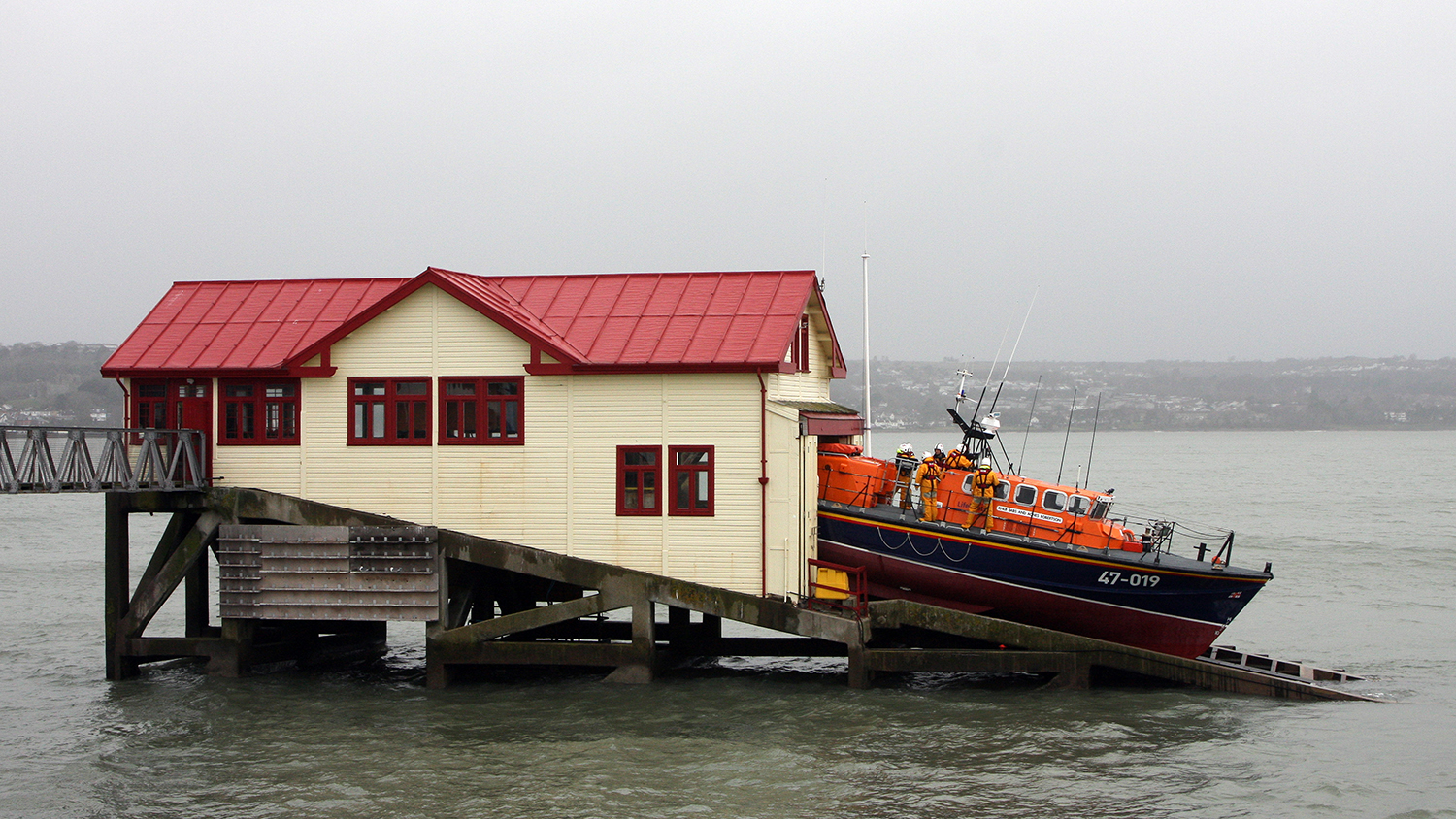

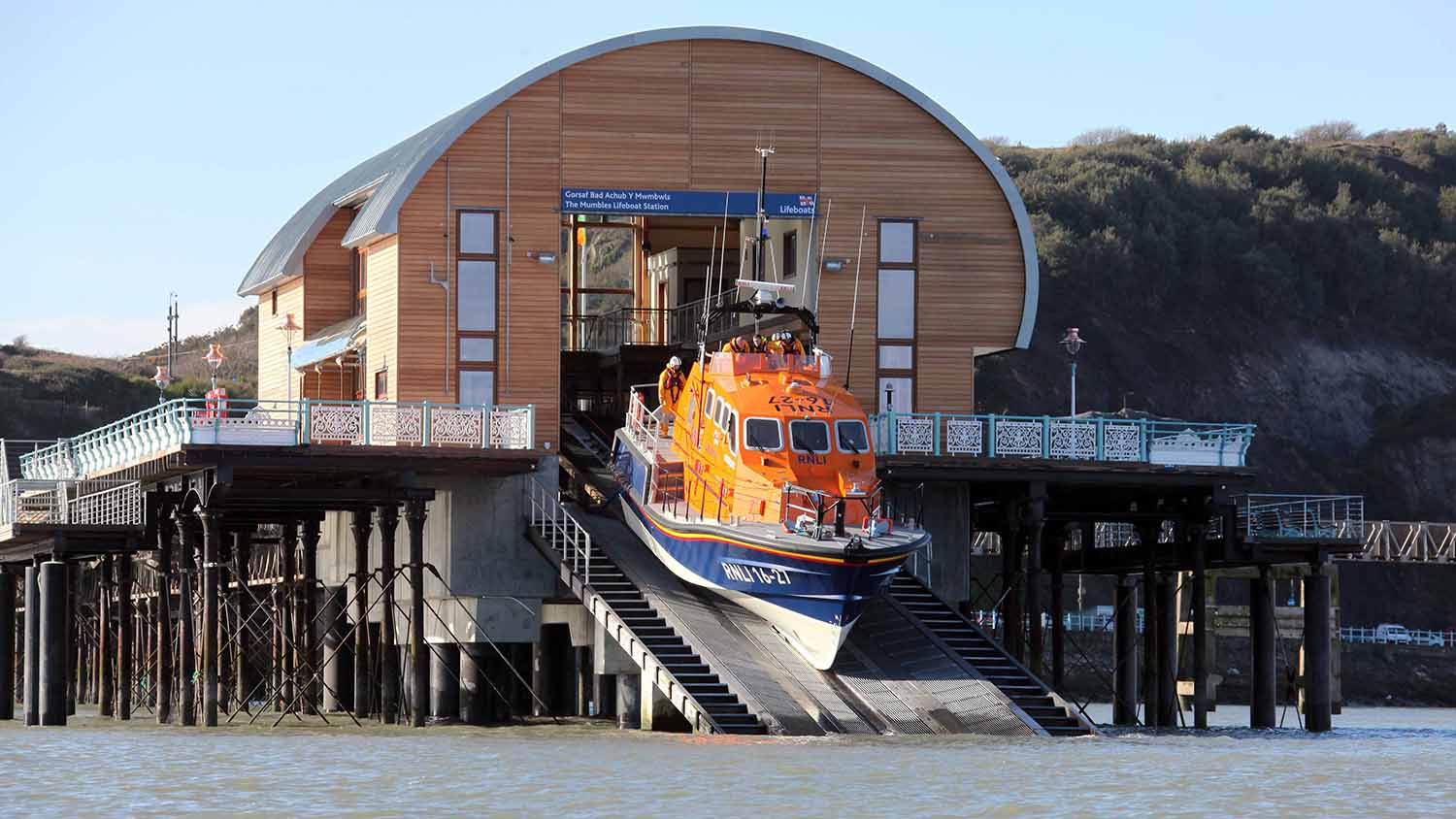

Year of completion
2014
About the station project
Before The Mumbles RNLI could receive their new all-weather Tamar class lifeboat, Roy Barker IV 16-27, a new boathouse and slipway needed to be built to protect, house and launch her.
At 90 years old, the station’s former boathouse was in desperate need of modernisation and was too old and too small to accommodate the larger lifeboat.
The new boathouse and slipway sits in the footprint of Mumbles Pier and was a key feature of a joint regeneration and restoration project for the 113-year-old structure, which has listed status.
Facilities for the crew are much improved: they no longer have to change into their lifesaving kit from the small deck of their former Tyne class lifeboat and endure cold, cramped conditions.
They now have a proper changing room and a shower to warm up after a tiring rescue. There is a mechanic’s workshop, an RNLI souvenir shop and a public gallery so that visitors can view the lifeboat.
The crew training room, meeting area, welfare facilities and office remain in the separate inshore lifeboat building nearby.
The support we have received from the people of south Wales has been fantastic, from people putting their spare change into collection boxes to those taking part in events. Every penny is so very much appreciated.Dave NicollRNLI Area Manager

Year of completion
2016
About the station project
Torbay RNLI’s Severn class all-weather lifeboat, Alec and Christina Dykes 17-28, lies afloat moored to the station’s pontoon berth, ready to respond quickly to emergencies at sea.
When Torbay lifeboat volunteers began experiencing problems with lateral movement of the pontoon when boarding the lifeboat, work was required to improve the stability of the structure and ensure the safety of the crew.
The original pontoon berth was replaced with a new pontoon secured with piles which, along with improved fendering, has enhanced the berthing facilities for the Severn class lifeboat. These improvements have also made mooring the lifeboat easier and safer for Torbay volunteers, particularly in poor weather conditions.
The access bridge to the pontoon was refurbished and repainted, providing safe and easy access to the lifeboat for the crew.
These important improvements to the pontoon will enable our volunteer crew to work even more safely and to continue the RNLI's vital lifesaving work.Nick O'BrienLifeboat Operations Manager, Torbay RNLI

Year of completion
2016
About the station project
Southend-on-Sea is one of only three of our lifeboat stations where the inshore B class Atlantic lifeboat is launched out of the boathouse transversely and lowered into the sea via a davit system– Ramsgate and Kinsale are the others.
The boathouse located on the Pier Deck of Southend Pier was originally designed for the station’s B class Atlantic 21, Percy Garon B-527.
When she was replaced in 2001 by the slightly longer Atlantic 75, Vic and Billie Whiffen B-776, the boathouse was able to accommodate the new lifeboat.
But the latest third generation B class Atlantic 85 lifeboat, Julia and Angus Wright B-885, was too long so the door opening of the boathouse was widened to make room for the new lifeboat and the space required for a safe launch and recovery.
In addition, the apron outside the boathouse was considered too narrow for safe circulation around the lifeboat. So an extension to the side of the Pier Deck was constructed and this has also allowed a stairway to be introduced, making boarding and disembarkation safer for the crew compared to the original vertical ladder.
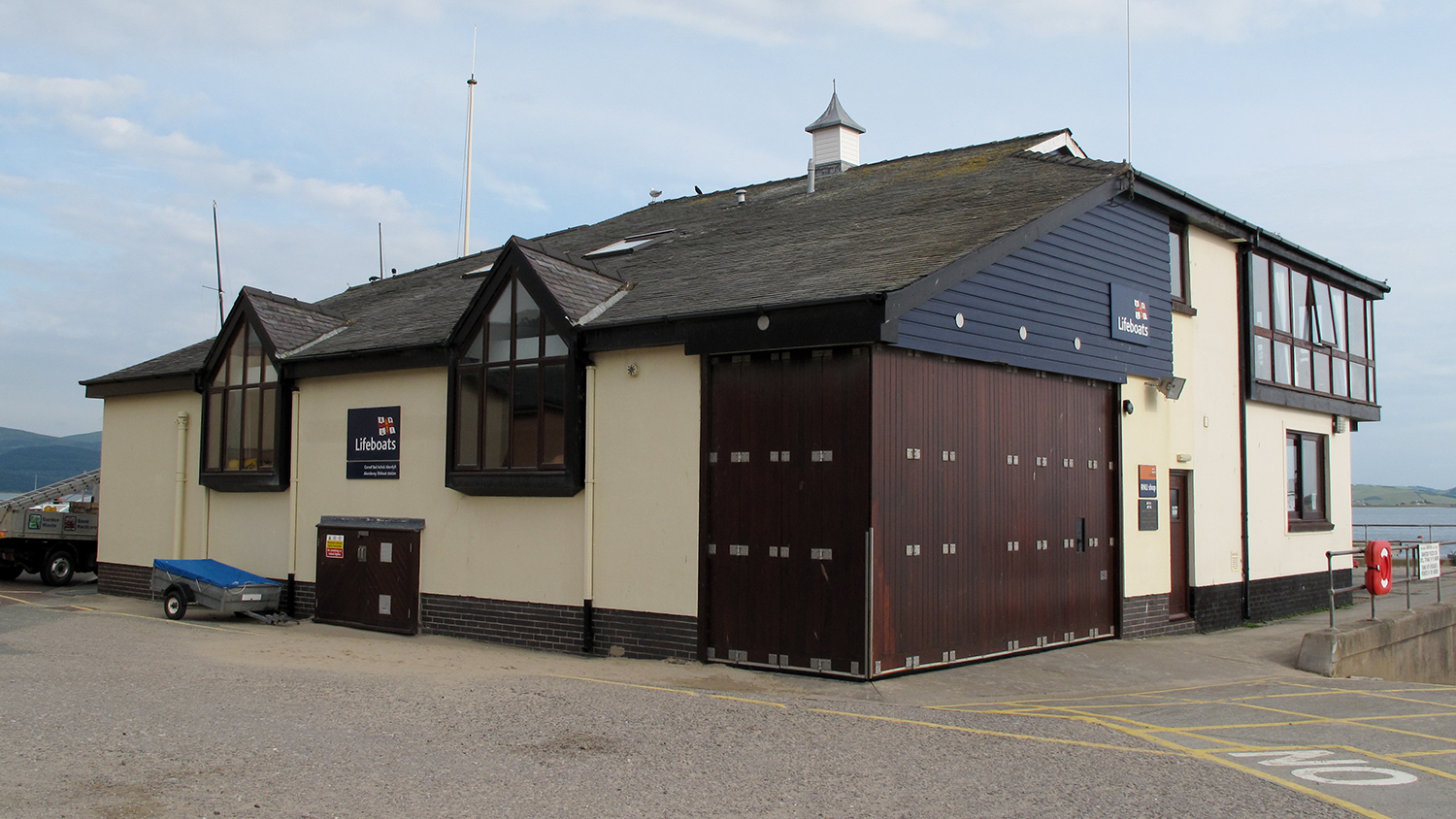
Year of completion
2016
About the station project
With the arrival of Aberdovey RNLI’s new inshore B class Atlantic 85 lifeboat, the boathouse needed to be extended to house the longer lifeboat and her launch and recovery tractor.
Storing the lifeboat with her launch and recovery equipment will improve launch times, saving vital seconds when lives are at risk at sea.
As part of the extension, the crew are now benefitting from improved modern facilities too.

Year of completion
2015
About the station project
Ilfracombe was one of our first stations to receive a brand new all-weather Shannon class lifeboat when their much-loved Mersey class lifeboat, the Spirit of Derbyshire 12-007, reached the end of her operational life.
The Shannon is 50% faster than her predecessor with a maximum speed of 25 knots – a crucial factor when lives are on the line.
The existing boathouse at Ilfracombe Lifeboat Station was too small to accommodate the station’s new Shannon, The Barry and Peggy High Foundation 13-09, and her innovative launch and recovery equipment. So it was extended and now provides a secure weather-proof haven for the all-weather lifeboat.
Other improvements made to the lifeboat station as part of the extension include:
- an extended crew room
- a larger crew kit room to combine the all-weather and inshore lifeboat equipment
- a bigger mechanic’s workshop
- and a purpose-built office for administration and communications.
And so begins a new era in lifesaving at sea for the community of Ilfracombe
Speaking at the naming ceremony for their Shannon class lifeboat and the official opening of their refurbished lifeboat station in June 2015, Ilfracombe Lifeboat Operations Manager Chris Wallis said:
'With all of the preparation work that has been done, all the hours that our volunteers have given to their intensive training, and having had the lifeboat officially go on service last week, I did not expect to be as moved as I was.
'Being tasked with the care of this amazing equipment is a huge honour, and I know that every member of our team feels the same.
'Now that the Shannon is officially on service, and is in our care, we will begin the next chapter in Ilfracombe RNLI’s history.

Year of completion
2015
About the station project
Dedicated volunteer lifeboat crews have run their own independent lifesaving service at Portishead since 1967.
Over the years committed crew members of the Portishead and Bristol Lifeboat, which was run and maintained by The Portishead Lifeboat Trust (TPLT), have saved many lives and assisted hundreds of people who might have got into a more serious situation, had the lifeboat not responded so promptly and effectively.
In 2015, the RNLI adopted the independent lifeboat service from The Portishead Lifeboat Trust and construction of the new inshore lifeboat station was completed.
Situated on the site of a former Masonic Lodge near Portishead Quays Marina, the new RNLI Portishead Lifeboat Station is operational 24/7 with no launch restrictions, unlike the previous station at Sugar Loaf Beach.
The purpose-built station provides much-improved modern facilities for the crew and is operated by the same volunteers who previously ran the Portishead and Bristol Lifeboat.
The station operates an inshore B class Atlantic 85 lifeboat called My Lady Anne B-884.
Working in tandem with RNLI lifeboats at Burnham-on-Sea, Weston-super-Mare, Penarth and Barry Dock, the stations provide a chain of safety around the Severn Estuary.
The station has come a long way in a very short space of time and that’s testament to the volunteers and their positive and proactive attitude during a time of considerable change.Paul EastmentRNLI Divisional Operations Manager, Porthcawl Crew Member and Flood Rescue Team Member

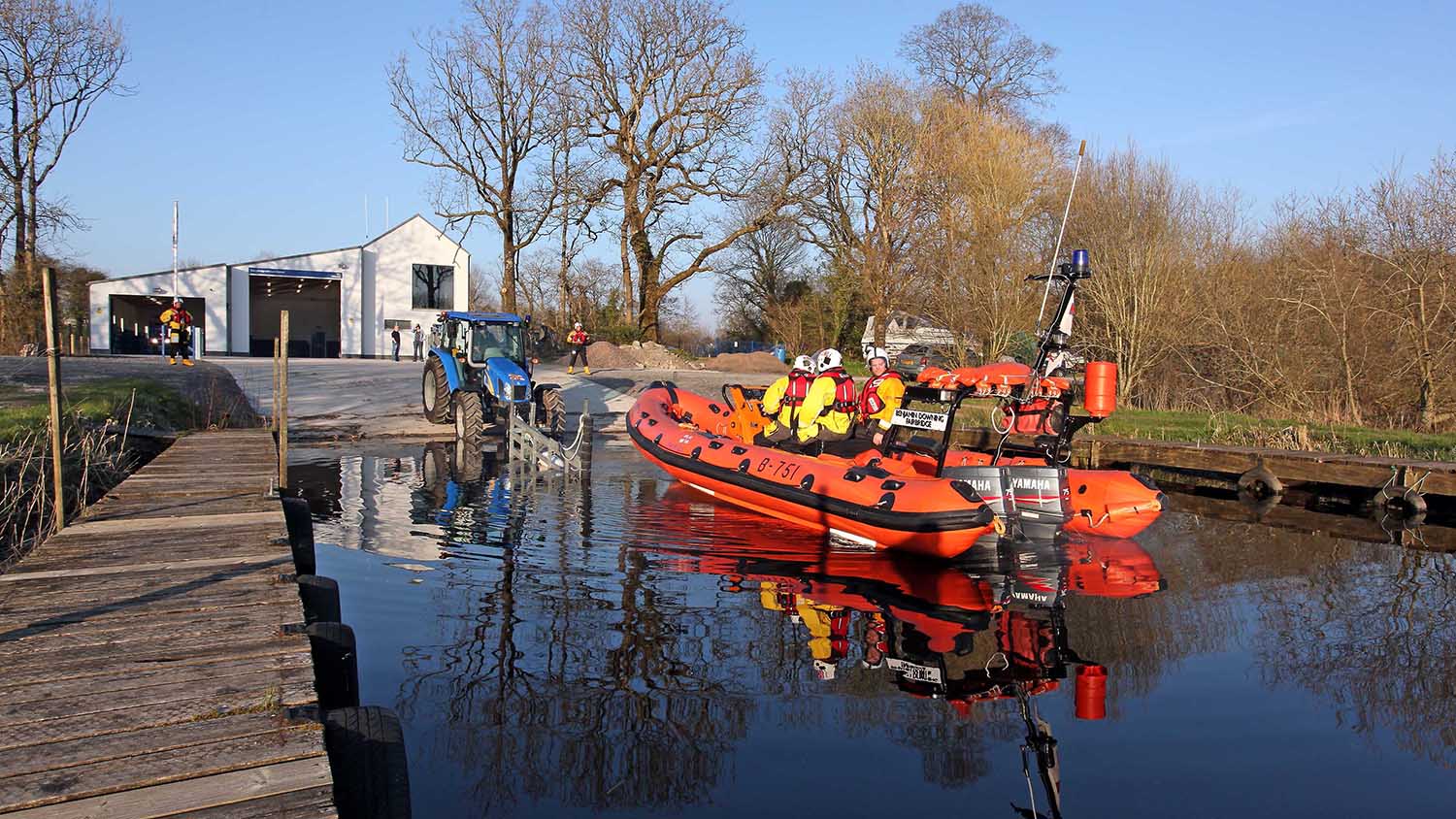
Year of completion
2015
About the station project
Enniskillen became home to our first non-tidal inland lifeboat station in 2001 based at Killadeas on Lough Erne – the second biggest lake in the UK.
Because of the lake’s size, complexity and high leisure use, it was decided in 2002 to base a second inshore B class Atlantic lifeboat at Carrybridge on Upper Lough Erne to operate alongside the lifeboat stationed at Lower Lough Erne.
It’s hard to believe that until 2015, our dedicated volunteer crew based at Upper Lough Erne were operating out of a temporary shed-like facility, partly exposed to the elements.
The crew had to change in a small, damp, metal container with only a Portaloo and wash basin as their comforts. There was nowhere for the crew to shower or dry after a challenging rescue and nowhere for them to gather and train together.
Now their new modern lifeboat station with full crew facilities has made a world of difference.
The eco-friendly station has a ground source heat pump which draws heat from the ground to heat the building, keeping the temperature inside at an ambient 15ºC. The excess heat is stored in a hot water cylinder, providing hot water for showering, washing up and cleaning the lifeboats. The building is also fitted with solar panels on the roof to generate electricity.
The new station is testament to the RNLI’s commitment and dedication to the community here locally and a credit to our crews’ efforts in continuing to bring people to safety on Lough Erne. Our volunteers are overwhelmed with the structure and facilities that they now have when they come together for call-outs and training. We would like to thank everyone who has helped us to get to this stage including all those who donated, organised or participated in any fundraising activity.Davey RobinsonLifeboat Operations Manager, Enniskillen RNLI

Year of completion
2015
About the station project
At over 100 years old, Moelfre RNLI’s former lifeboat station was too old to withstand the extensions needed to accommodate their new all-weather Tamar class lifeboat, Kiwi 16-25.
Conditions at the former station were dated and cramped. Access to the crew room was via a steep ladder and the crew had no dedicated changing or drying room. Their kit was kept in the garage housing their inshore D class lifeboat, Enfys D-689, where it often remained damp and cold until the next shout.
The new station now houses the station’s all-weather and inshore lifeboats and has a mechanic’s workshop and modern changing facilities for the crew including a drying room for kit and a hot shower.
With the station office, crew training room, meeting area and visitor facilities based at the RNLI Seawatch Centre 150 yards away, the size of the new lifeboat station was reduced, saving a significant amount in building costs.
The life expectancy of the Tamar class lifeboat is 50 years and the station life is over 100 years. This opens a new chapter in the proud lifesaving history of the Moelfre RNLI Lifeboat Station and I am honoured to be here to witness it.Rod PaceLifeboat Operations Manager, Moelfre RNLI
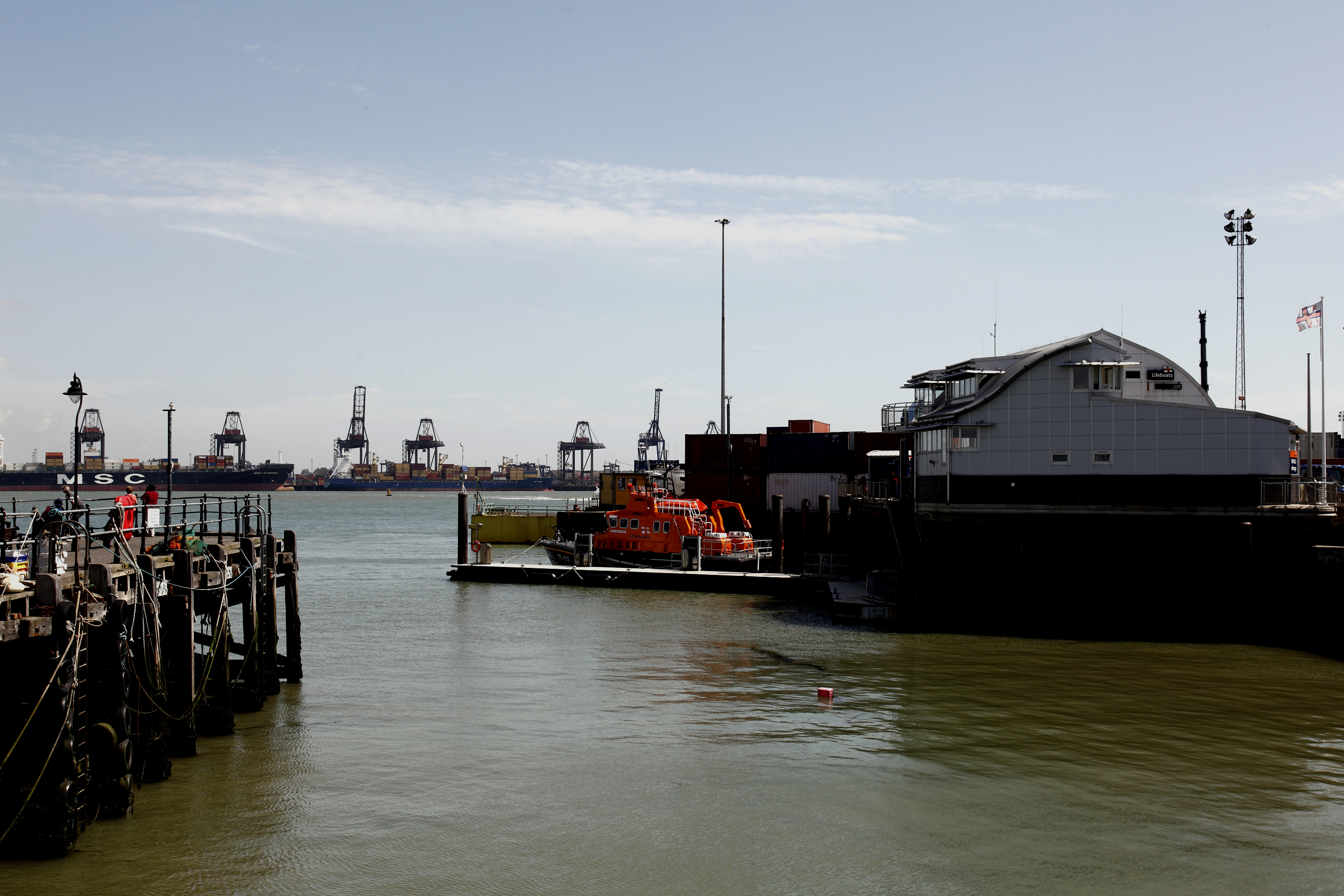
Year of completion
2014
About the station project
Lying opposite Felixstowe, the UK’s busiest commercial port, Harwich is one of our busiest coastal lifeboat stations.
It was the first station to receive our largest lifeboat, the Severn, back in 1996 and the all-weather lifeboat, Albert Brown 17-03, lies afloat on a mooring alongside the station allowing for a fast response to emergencies at sea.
The Severn’s pontoon berth was installed in 2004 and needed replacing.
The new pontoon berth is orientated differently to provide better protection of the lifeboat in bad weather and making it easier to release the lifeboat from her berth in such conditions.
With periodic maintenance to prevent corrosion of the pontoon’s steel structures, the main pontoon construction should last in excess of 50 years.

Year of completion
2014
About the station project
At over 120 years old, Porthdinllaen RNLI’s former lifeboat station on the Llyn Peninsula was too old to sustain the work required to house the station’s new Tamar class lifeboat, John D Spicer 16-24.
The dated crew facilities were separate from the station, located a short distance away up a hill, and lacked space for essential kit and maintenance.
There was no dedicated changing area either so the crew were getting into their kit on the lifeboat deck, even in the middle of Winter.
So the station was demolished to make way for a new modern station and slipway with vastly improved facilities for the crew.
The crew now benefit from a proper changing room with hot shower and a drying room for their kit. Other facilities include a crew training room, mechanic’s workshop and a public viewing gallery.
It has been a challenging 18 months maintaining business as usual whilst operating out of temporary accommodation. But seeing John D Spicer safely housed in her new home has made everything worthwhile and is the culmination of a long project and the realisation of a dream for us. I cannot praise our crew enough for their commitment and dedication during this transition period.Mike DaviesCoxswain, Porthdinllaen RNLI















